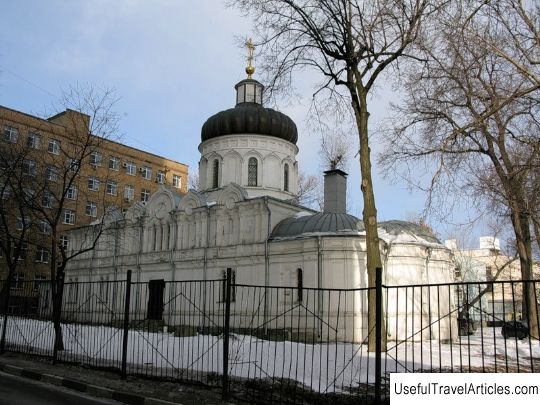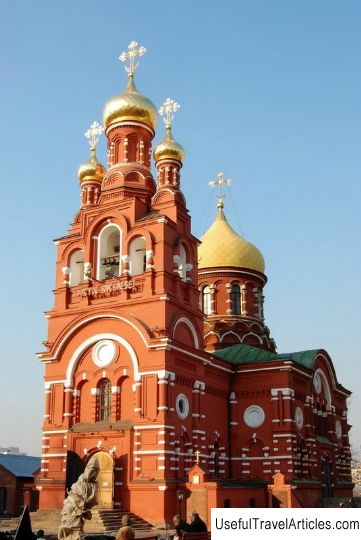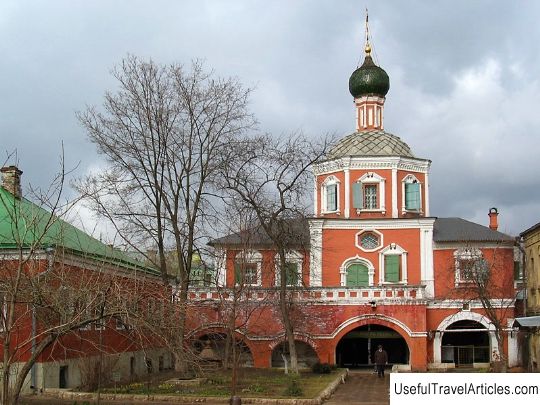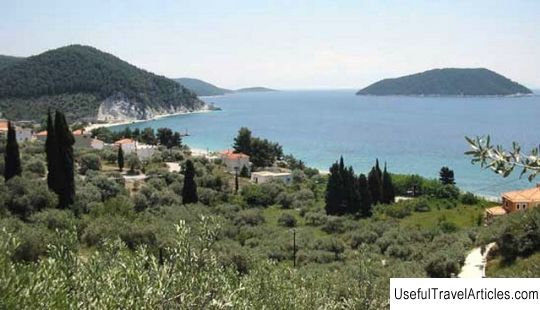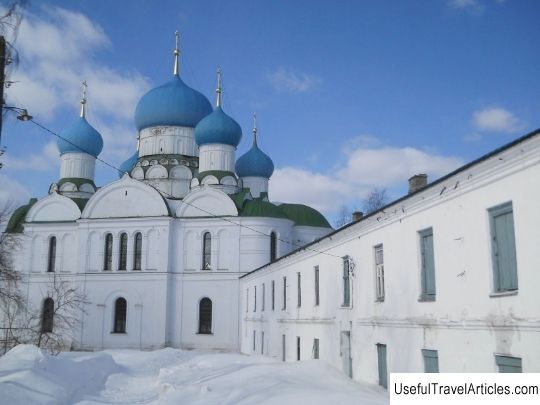Alekseevsky Monastery description and photos - Russia - Golden Ring: Uglich
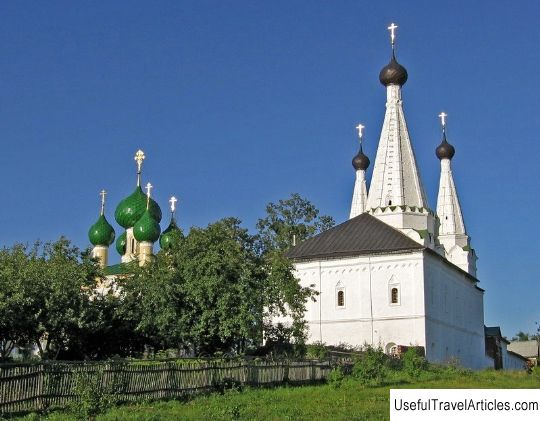
Alekseevsky Monastery description and photos - Russia - Golden Ring: Uglich. Detailed information about the attraction. Description, photos and a map showing the nearest significant objects. Photo and descriptionIn the city of Uglich, on Sharkov Street, there is the Alekseevsky Monastery, which is the oldest of all the monasteries in the city. It is located immediately behind the Stone Creek, on a small hill, which in the past was called the Fiery Mountain. The founding of the monastery took place in 1371 with the support of the Moscow Metropolitan Alexy. As you know, Alexy played a rather active role in political life, which is why he decided to build a monastery in these places, which also became a political step. At that time, the Moscow principality, which was gaining strength, sought to extend its influence to other principalities. In 1584, at the Alekseevsky monastery, a stone church was erected - the temple of Metropolitan Alexy - from this church only the destroyed remains of the walls have survived ... For a long time, other monastery buildings remained wooden. The Alekseevsky Monastery has always enjoyed great sympathy among the royal people. In the 19th century, an orphanage operated at the monastery, as well as a library and a school for ministers' children; homeless people could eat at the monastery. The most important feature of the monastery was the "Wondrous" Assumption Church, visible from afar, equipped with three tents. It received its name "Wonderful" immediately after its construction in 1628 - at this time the city was gradually recovering from the deadly Polish-Lithuanian ruin. In the period between 1608 and 1612 Uglich was besieged by the Poles, which is why about five hundred people were hiding behind the gates of the monastery. Soon the Poles were able to get into the monastery, and all the inhabitants of the city were killed. Most likely, the first tent-roofed church was built in memory of the tragically perished townspeople, because it was the tent-roofed temples that were built in honor of the blessed memory of the dead or in honor of new victories. Three massive tents were erected as symbolic monuments to the residents of the city of Uglich. The Assumption Church stands on an elevated basement, and an extended refectory room adjoins it on the west side. The main part of the composition is the central part, equipped with three white tents and the same number of apses, somewhat echoing with the hipped roof of the temple. The surrounding of the central tent is made in the form of a belt of kokoshniks, while it is slightly raised and shifted towards the west, which is why the overall composition looks more voluminous. The decoration of the walls is made very laconically, because they set off the tents, and the ledges run along the edges of the edges, which gives a light and delicate look. The apses are decorated with ornate arcature-columnar belts, which give the temple a festive look. In the inner part, the church is not large, because the tents themselves are made "deaf". Not far from the Assumption Church there is a later built cathedral in the name of John the Baptist, which appeared in 1681. The building of the cathedral is presented quite massive and wide, equipped with five huge domes, located on rather thin drums. The wide refectory room makes the temple more squat, which further increases its squatness in comparison with the nearby high Assumption Church. Next to the apses of the cathedral until 1917 there was a monastery cemetery, on the territory of which honorary residents were buried for almost 600 years Uglich and monks. During the reign of Soviet power, the cemetery was destroyed, and today a rose garden is located in its place. At the Alekseevsky Monastery, the Epiphany Church operated with a refectory room, and there was also a bell tower. Along the perimeter from all sides, the monastery was surrounded by a stone fence, and there were also the Holy Gates. None of the buildings have survived to this day or only partially exist, for example, a gate and a fence. In the 30s of the 20th century, the monastery was closed and some of its buildings were given for housing. At present, the monastery is a functioning convent. and there was also a bell tower.Along the perimeter from all sides, the monastery was surrounded by a stone fence, and there were also the Holy Gates. None of the buildings have survived to this day or only partially exist, for example, a gate and a fence. In the 30s of the 20th century, the monastery was closed and some of its buildings were given for housing. At present, the monastery is a functioning convent. and there was also a bell tower.Along the perimeter on all sides, the monastery was surrounded by a stone fence, while there was also the Holy Gates. None of the buildings have survived to this day or only partially exist, for example, a gate and a fence. In the 30s of the 20th century, the monastery was closed and some of its buildings were given for housing. At present, the monastery is a functioning convent.         We also recommend reading Royal Flying Doctor Service description and photos - Australia: Alice Springs Topic: Alekseevsky Monastery description and photos - Russia - Golden Ring: Uglich. |
